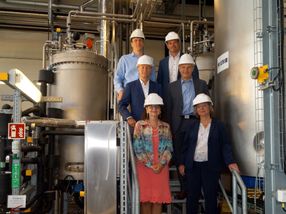Novozymes develops fungus to produce biochemicals
Advertisement
Novozymes has succeeded in developing a fungus that enables production of malic acid from renewable raw materials instead of oil. Malic acid is used as a flavor enhancer in the food industry and can be converted into other chemical derivatives used for a variety of plastic, polymer and resin products. Novozymes is now out-licensing the technology to partners who are interested in producing and commercializing malic acid and derivatives made from renewable raw materials instead of oil.
“This is our first biochemical building block and a major milestone towards building a biochemical industry together with partners,” says Novozymes’ Executive Vice President Thomas Videbæk. “Oil-based products are all around us, and biochemicals produced from renewable raw materials meet a global need for sustainable alternatives. This need is growing due to concerns about crude oil scarcity and price fluctuations.”
Jelly and golf balls
Malic acid occurs naturally in fruits and many vegetables. In the food and beverage industries, it is added to enhance the sour flavor in products such as jellies, jams, juices and soft drinks.
Malic acid also has significant potential as a building block in the chemical industry. Along with succinic acid and fumaric acid it belongs to the group of C4 dicarboxylic acids. C4 acids can be converted into 1.4-butanediol (BDO), a veritable Swiss Army knife of the chemical industry that can be further converted into numerous chemicals, including plastics, polymers and resins for use in everything from golf balls and skateboard wheels to printing inks and cleaning agents.
Novozymes started its research in biochemicals in 2006 and has since initiated a number of highly technically challenging projects to enable sustainable and cost-competitive production of biochemicals. In the production of biochemicals, renewable raw materials such as starch from corn or cellulosic biomass from agricultural waste are converted into sugars, just as in the production of biofuels. These sugars are then transformed into chemical building blocks by enzymes or microorganisms that have been designed specifically for this purpose.
Most read news
Other news from the department research and development

Get the life science industry in your inbox
By submitting this form you agree that LUMITOS AG will send you the newsletter(s) selected above by email. Your data will not be passed on to third parties. Your data will be stored and processed in accordance with our data protection regulations. LUMITOS may contact you by email for the purpose of advertising or market and opinion surveys. You can revoke your consent at any time without giving reasons to LUMITOS AG, Ernst-Augustin-Str. 2, 12489 Berlin, Germany or by e-mail at revoke@lumitos.com with effect for the future. In addition, each email contains a link to unsubscribe from the corresponding newsletter.


























































